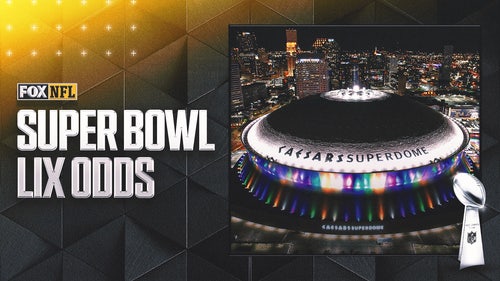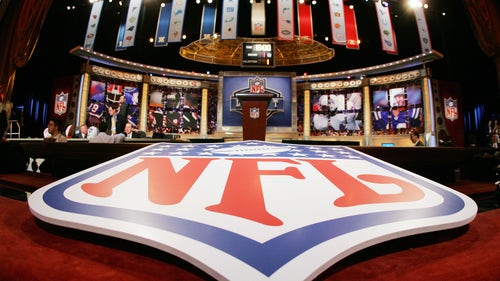
What to expect as murder trial of Will Smith's accused killer Cardell Hayes begins
Nearly eight months ago, former New Orleans Saints defensive end Will Smith and New Orleans semipro football player Cardell Hayes saw a minor traffic incident turn into a fatal shooting. Smith would lose his life and Hayes would be charged with murder. On Monday, the trial of Hayes begins in a New Orleans court. Here are the key elements to the case:
A disputed set of facts emerges from a Saturday evening in New Orleans
It was about 11:30 p.m. on Saturday, April 9, when Hayes, then 28, was driving on New Orleans’ Magazine Street in his Hummer H2. A friend, Kevin O’Neal, was seated in the passenger seat. Meanwhile, the 34-year-old Smith was driving his Mercedes SUV behind Hayes’ Hummer. Smith’s wife, Racquel Smith, and possibly two other persons (thought to be the Smiths’ neighbors, Richard and Rebecca Hernandez) were passengers. The Smiths had just attended a dinner with friends at Sake Café, also on Magazine Street. A toxicology report reportedly indicates that Smith was intoxicated while driving at this time.
According to Hayes, Smith rear-ended his SUV into the Hummer right after Hayes had stopped at a red light. There remains dispute about whether the two cars actually made contact. Regardless, as Hayes explains it, he then drove to the side of the street to assess damage to his car and prepare for a discussion with the driver of a car that he believes had just hit his car. Instead of pulling over as well, however, Smith quickly drove off in the SUV.
Hayes, while behind the wheel of his Hummer, then followed Smith’s SUV. After little more than a block, Hayes bumped his Hummer into the rear of Smith’s SUV. This, in turn, caused the front of Smith’s SUV to bump into the rear of a Chevy Impala driven by a friend of the Smiths, reportedly named Jonathan Whipple. There are conflicting accounts about whether former Saints running back Pierre Thomas and retired New Orleans Police Department captain Billy Ceravolo—both of whom dined with the Smiths that evening—were in one of the two cars associated with the Smiths. Also, while surveillance videos captured substantial portions of these road incidents, those videos were limited by both evening darkness and distance from the road.
With now three cars involved in a fender-bender, Smith and Hayes then confronted one other. There is dispute about whether Smith confronted Hayes with the help of two other men from Smith’s SUV and/or from the car allegedly driven by Whipple. What is clear is that the argument between Hayes and Smith quickly escalated. Police contend that the 28-year-old Hayes, who was armed with a .45 caliber Ruger handgun, shot Smith eight times, killing the former Pro Bowler. Forensic evidence and a coroner’s report indicate that seven of those bullets entered Smith’s body through his back, which, if established, would mean that Smith was not facing Hayes when Hayes fired most of the bullets. Hayes is also accused of twice shooting Racquel Smith, once in each leg. She would survive but requires a wheelchair to get around.
For a more detailed and complete account of these alleged facts, be sure to read Richard O’Brien’s excellent SI True Crime feature, The Saint v. The “Thug”.

The charges and the start of jury selection
Today is the day that Hayes faces trial for Will Smith’s death and Racquel Smith’s shooting. Hayes faces four charges—second-degree murder, attempted second-degree murder, aggravated criminal damage and aggravated criminal assault with a firearm. Although a conviction on any of the four charges would carry a lengthy prison sentence, a conviction on second degree murder would be the most consequential: Hayes would spend the rest of his life in prison without a chance for parole.
12 jurors will be picked on Monday and, if necessary, Tuesday. They will decide Hayes’ fate. The trial, which is expected to last about two weeks, will be presided over by Judge Camille Buras of the Orleans Parish Criminal Court.
How the prosecution will try to prove that Hayes is guilty of second degree murder
In order to convict Hayes of second degree murder, prosecutors must prove that Hayes either had the intent to kill Smith or the intent to cause Smith great bodily harm and that Smith died as a consequence of that bodily harm. Jurors could also find Hayes guilty of the lesser charge of manslaughter, which under Louisiana law is an act of murder “committed in sudden passion or heat of blood immediately caused by provocation sufficient to deprive an average person of his self-control and cool reflection.” A manslaughter conviction carries a maximum sentence of 40 years.
Assistant district attorneys Jason Napoli and Laura Rodrigue, who are the lead prosecutors in this case, are advantaged by several factors.
First, Hayes clearly shot and killed Will Smith. Unlike in some murder trials, the prosecutors in the Hayes trial will have no difficulty establishing that the defendant killed the victim.
Second, there is no plausible argument that the shooting was accidental. Hayes is accused of firing eight bullets at Smith and hitting him on each one. This was not an inadvertent firing that led to a tragic result. This was an incident where one person purposefully shot another person, eight times according to prosecutors.
Third, as noted above, evidence indicates that seven of the eight bullets entered Smith’s body through his back (the eight entered through Smith’s side or chest). This not only suggests a non-accidental shooting but it insinuates that the shooting involved a victim who was shot while moving away from, or even fleeing, the shooter.
Fourth, Hayes shot Smith despite the fact that Smith was apparently not armed. Indeed, according to police, no other bullets were fired in the incident. While police found a fully loaded 9mm handgun inside Smith’s SUV, it does not appear to have been on Smith’s body at the time of the incident.
Fifth, Racquel Smith will testify and portray Hayes as having intentionally—and viciously—shot her and her husband. Her testimony is poised to be very influential. Indeed, jurors will no doubt be paying close attention to her words. Others who were part of Smith’s party are also likely to testify and they will describe Hayes as a murderer.
How Hayes will wage a defense
If you only read the preceding section, you would think that the prosecution has excellent case for obtaining a conviction. To be sure, it might seem that a conviction is certain: there is no question that Hayes purposefully shot and killed Smith. But the law is not so simple or neat. While Hayes and his lead attorneys, John Fuller and Jay Daniels, are unlikely to contest that their client shot and killed Smith, they will insist that it was a “justifiable homicide” under Louisiana law.
As I detailed in an SI.com article on the death of former New York Jets running back Joe McKnight, Louisiana is one of approximately 33 states that has adopted a “stand your ground” law. The scope of these laws varies significantly by state, including under which circumstances (home, car, place of employment, etc.) they apply. Generally, however, stand your ground laws make it lawful to use what would otherwise be considered unlawful force to defend oneself against a threat or perceived threat that risks death or great bodily harm. A person who kills another in a circumstance protected by a stand your ground law has committed a non-criminal justifiable homicide rather than murder or manslaughter.
Stand your ground is not the same legal principle as self defense, which in many instances requires a person retreat when it is safe to do so. Stand your ground expressly excludes a duty to retreat. Indeed, stand your ground allows a person to use deadly force to defend himself or herself and possibly family, friends and property as well.
Under Louisiana law, a justifiable homicide matches up with these principles. Justifiable homicide includes a killing “when committed in self-defense by one who reasonably believes that he is in imminent danger of losing his life or receiving great bodily harm and…the killing is necessary to save himself from that danger.” Louisiana law makes clear that there is “no duty to retreat before using deadly force” and that the person using force is empowered to “stand his or her ground and meet force with force.” Further, Louisiana law expresses that “the possibility of retreat” cannot be considered a factor “in determining whether or not the person who used deadly force had a reasonable belief that deadly force was reasonable and apparently necessary.”
To wage a successful defense, Hayes must convince jurors that he reasonably believed that he was in imminent danger of losing his life or suffering great bodily harm at the time he shot Smith. To accomplish that goal, his attorneys will likely raise these points:
• Minutes after the shooting, Hayes told an off-duty police officer, Christopher McGaw, that Smith, upon noticing that Hayes was armed, threatened Hayes by saying, “Oh, you have a gun? I have one too.” If this account proves accurate, jurors would be more inclined to believe that Hayes possessed reasonable grounds to be concerned about his and O’Neal’s safety. McGaw will likely testify at the trial.
• Hayes told an on-duty police officer, Amanda Williams, that Smith had hit him in the head three times. If jurors believe that Smith had tried to inflict serious injury upon Hayes, Hayes would have greater justification to defend himself.
• Both Hayes and O’Neal told the police that other men, perhaps two of them, had accompanied Smith in their on-street confrontation and were similarly threatening. Jurors viewing the situation as “three men against two” may be more sympathetic to Hayes’ decision-making.
• After the shooting, Hayes seemed to act in a responsible way. He remained at the scene and placed his gun on the hood of his Hummer. He also placed he gun’s magazine next to the gun on the hood. Hayes later answered police officer’s questions. He did not flee or evade authorities.
• O’Neal will be a key witness. It is expected that he will testify that Hayes never intended to crash into Smith’s SUV, but rather tried to drive close enough to observe the SUV’s license plate number. O’Neal will also describe Cardell as heroic. He told SI’s Richard O’Brien that Cardell saved his life by shooting Smith.
• Smith’s body was found in his car and in a position that may be consistent with him reaching for the glove compartment box at the time of the shooting. If the loaded gun found in the car was in, or near, the glove compartment box, Hayes’ attorneys can more convincingly argue that Hayes shot Smith while Smith was reaching for his gun. This is a key point: if jurors conclude that Smith was about to shoot Hayes, Hayes shooting Smith would be more consistent with self-defense than with murder.
• Smith was apparently very drunk—his blood alcohol content was reportedly .235, almost three times the legal limit—and thus more likely to behave in an unpredictable and irrational manner. The more jurors believe that Smith was incapable of being reasoned with, the more likely they will accept Hayes’ actions.

Hayes could testify but doesn’t have to
As a criminal defendant, Hayes cannot be called to the stand. If Hayes does not testify, Judge Buras would instruct jurors that they are forbidden from using Hayes’ silence against him.
Hayes, however, might want to testify. After all, he knows what happened that evening as well as anyone. Along those lines, jurors hearing from Hayes—instead of only from other witnesses and law enforcement—about how the incident unfolde might find his defense more compelling.
Yet criminal defense attorneys often discourage their clients from testifying—even if those attorneys are convinced of their clients’ innocence. The risk of testifying is that a defendant, particularly one who may not be skilled at answering questions or one who may seem suspiciously nervous while under the spotlight, could harm his or her defense by the manner in which they answer questions and compose themselves. In that same vein, questions articulated by prosecutors are often difficult and tricky. Prosecutors are skilled attorneys who are in the business of asking hard questions to defendants on cross-examination.
That said, if Hayes testifies and cogently explains what happened in a way that portrays him as innocent, he could go a long way towards convincing jurors to find him not guilty. Whether or not Hayes testifies in his own defense will be a crucial development in the trial.
The jury: sequestration and Louisiana’s unusual less-than-unanimous verdict requirement
In a move opposed by Hayes’ attorneys, Judge Buras has ordered that the jurors and the alternate jurors be sequestered. This means that they will be housed and fed in a local hotel and denied access to the Internet, television and radio. Sheriff deputies will monitor jurors’ whereabouts at all times. The jurors will be permitted to make monitored phone calls and will be able watch recordings of court-approved TV shows and movies, but otherwise, they’ll be left to the kinds of entertainment that some of us remember were popular years ago—books, cards, checkers, chess, board games and like.
The purpose of a jury sequester is to prevent jurors from being influenced by media and other sources that could share information with them that is not admissible or not introduced in the trial. If such influence occurs, a juror can be disqualified on grounds of misconduct and the judge could even declare a mistrial.
While the purpose of jury sequestration is sound—particularly in a high-profile trial—it is nonetheless very disruptive for jurors. Jury sequestration prevents or at least substantially limits jurors’ interaction with family and friends, and necessitates unwelcomed changes to their daily routines. Think about not being able to see your family or friends for a couple of weeks, and not being able to go on-line or receive any news during that time – most people would find that it to be fairly challenging. Some sequestered jurors have later on gone so far as to describe sequestration as feeling like they were prisoners when they had done nothing wrong.
Hayes’ attorneys opposed Judge Buras sequestering the jury on grounds that it would impact the kinds of prospective jurors who are capable of serving. Prospective jurors with young children and those who cannot afford childcare, for example, may be unable to serve on a sequestered jury. There are other categories of persons for whom sequestration would be too burdensome. Judge Buras, however, rejected the concerns. She reasoned that the necessity of sequestration in a trial of this prominence outweighs the impact sequestration might have on the availability of prospective jurors. If Hayes is convicted, it stands to reason that one of the grounds of his appeal could be Judge Buras’ decision to sequester.
Of perhaps greater concern to Hayes and his attorneys is that Louisiana is one of only two states—Oregon is the other—that does not require a unanimous jury for a criminal conviction. In Louisiana state (not federal) criminal trials, only 10 of 12 jurors are needed to support a conviction. While the Sixth Amendment to the U.S. Constitution requires a unanimous verdict for criminal trials in federal court, that requirement does not extend to criminal trials in state courts.
Stay tuned on SI.com for key developments in the Hayes trial.
Michael McCann is SI's legal analyst. He is also a Massachusetts attorney and a tenured law professor at the University of New Hampshire School of Law.
This article originally appeared on










